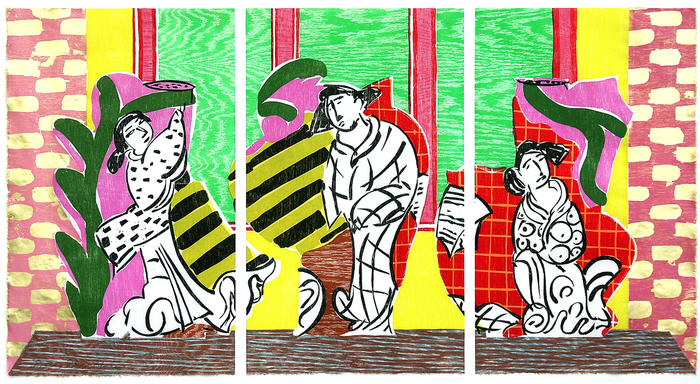Betty Woodman (artist 05/14/1930 – 01/02/2018)
Elizabeth Abrahams WoodmanLinks
Sharks InkNew York Times - an extensive obituary
Biography:
Betty Woodman (b. 1930) is internationally recognized as one of the most important ceramic artists working today. Through her inventive use of color and form and her expert blend of a wide range of influences, she creates exuberant and captivating ceramic sculpture.
Betty Woodman first became interested in crafts because her father was a woodworker. In high school, one ceramics course was sufficient to convince Woodman that she wanted to be a functional potter. Studying pottery at the School for American Craftsmen at Alfred University, she developed a strong interest in the history of ceramics. Her first job after graduating in 1950 was as a production potter, and that technical facility and experience were to be the foundation of her subsequent innovations. In 1952 Woodman traveled to Italy, where exposure to traditions such as majolica opened her eyes to the potential of clay.
It was not until the seventies that Woodman completely abandoned her functional approach. Collaborating with important figures in the Pattern and Decoration movement, such as Joyce Kozloff and Cynthia Carlson, she began producing colorful, witty—and nonfunctional—vessels decorated with scenes from the Italian Renaissance or slathered with landscape clouds. Woodman's eccentric shapes and glazes are often appropriated from other cultures; her work in a sense functions as a very personal interpretation of art history. While the artist still produces human- and tabletop-size works, in recent years she has increased her scale, creating environmental installations for museums and galleries in the United States and abroad.
Since 1985, Woodman collaborated with Master printer Bud Shark to produce monotypes, woodcuts and lithographs with the same inventiveness and exuberance of her ceramic work. Taking up the challenge to work in two dimensions, Woodman painted, cut, and collaged her prints to create glorious pots sitting in interiors, just as she formed, cut and assembled her ceramic pots. Woodman’s painterly prints make reference to the rich history of ceramics around the world, from the “Oribe Tray” monotypes, to “Etruscan Pot”, and “Iznik” and the pots she referred to as Japanese ladies in the woodcut/lithograph, “Ladies on the Balcony”.
National Museum of American Art (CD-ROM) (New York and Washington D.C.: MacMillan Digital in cooperation with the National Museum of American Art, 1996)
